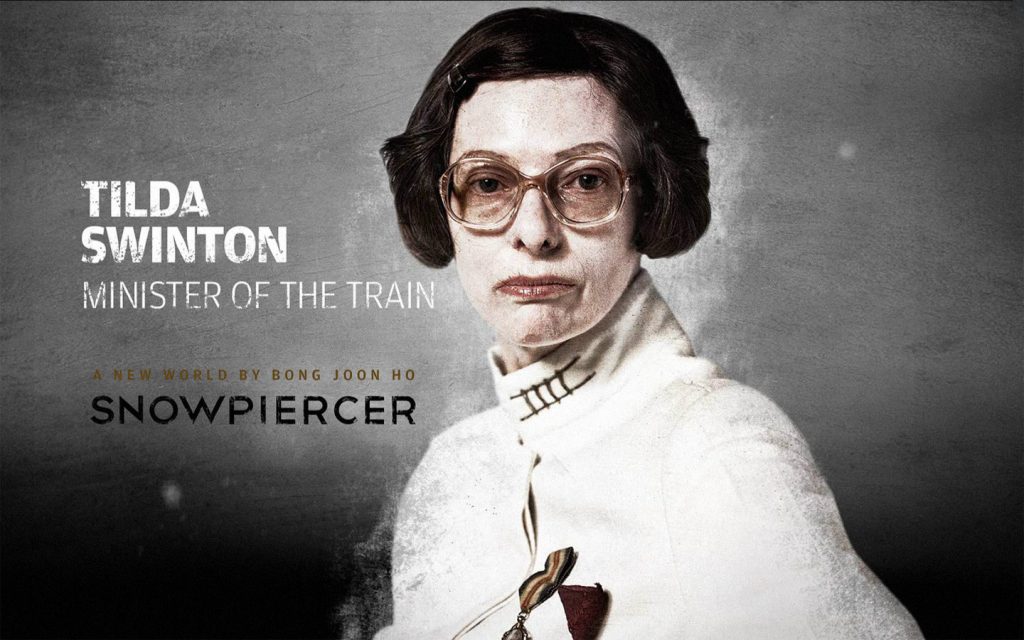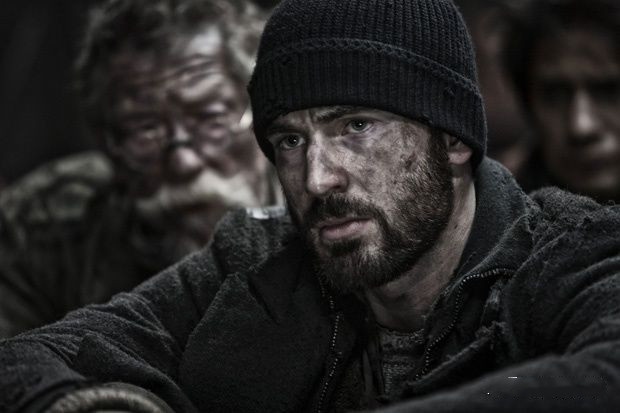Snowpiercer’s Metaphor: Capitalism and Its Ideology

To understand the movie, you have to understand the metaphor of the train. The last oracular note Curtis receives reads “Train,” suggesting that the train is the key to understanding. So what is a train? It’s a high-speed, closed-loop, hierarchical system that protects people from the natural wind and snow, but has to endure the immobility of captivity. The gluttonous bliss of the upper train is the extreme poverty of the lower. When it comes to the real world of train metaphors, nothing is more relevant than capitalism.

Looking back at modern history, capitalism has been developing rapidly on a global scale since its birth. All social systems and civilizations must give way to capitalism, or they will be crushed by the power of capital (think of the colonization of South America, the peaceful evolution of Eastern Europe). In fact, the high-speed trains that cut through mountains and split stones represent the history of the invincible development of capitalism and the accompanying process of modernization.
The reason for the existence of trains is the perpetual motion machine. In the movie, the kinetic energy of running trains, the maintenance of ecosystems and the continuation of human life depend on the perpetual motion machine, which is claimed to provide eternal power. If combined with the train metaphor, then the perpetual motion machine points to the great productivity under the capitalist system. Capitalism, as Marx said, has unleashed more productive forces in the last hundred years than in all the previous centuries combined. When mountains are flattened, mountains are cleared, cities are built out of thin air, the productivity of capitalism is so amazing that people think it will last forever, like believing in the myth of a perpetual motion machine. However, we all know that a perpetual motion machine that violates the law of conservation is impossible, just as the claim that capitalism can guarantee productivity forever (Fukuyama’s historical conclusion) is a complete fantasy, despite the vitality of capitalism today. And when the perpetual motion machine ceases to work forever, when capitalist productivity can no longer be guaranteed, the train will capsize and capitalism will die, as the closing credits suggest.

In fact, the whole film can be seen as a process of proletarian violent revolution. The proles at the end of the train chain, with a simple idea of equality, with the yearning for steak, put their heads and blood all the way to the top of the train. The bravery of the revolutionaries is moving, but the success of the revolution after the degeneration of the leader is more reflective. Under Villefort’s wordy teaching, Curtis was obviously lost. He even began to recognize the rationality of the existence of trains and accepted the fact that trains would last forever, thus doubting the original motive of the revolution. This is the terrible thing about the capitalist system. It is self-healing and self-healing. It can incorporate and rationalize all the reactionary factors. Looking back on the surging proletarian movement and its results for more than a century, one has to admit this chilling fact. So if you don’t destroy the whole train, if you don’t overturn the whole capitalist system, then the proletarian revolution will always be just a game of taking turns as emperor.
Capitalism’s realistic domination of human beings is indeed terrible, but what is more terrible is the ideological domination of human brains by ideology. The film implies at least three ideologies.
- Secretary Mason says that shoes are meant to be worn on the feet and not on the head. Poor people should stay in the caboose, it is wrong to hope to go to the front. Give your poor people the right to live, and you poor people should repay their kindness. It is evil to attempt revolution. As if she were taking the moral high ground, she had committed a fundamental logical fallacy: she confused what was with what should be. The actual pauper is humble, but that does not mean they should be; The upper classes are indeed noble, but that does not mean they are necessarily noble. The affirmation and rigidity of the existing is the rule of capitalist ideology, and Secretary Mason’s mind is so firmly ruled that it is indignant. And sadly, some of the people who are being exploited actually subscribe to this hierarchy.
- The teacher in the best carriage indoctrinates the child with the myth of a perpetual motion machine, making the child uncritically and unconditionally accept the fact that trains will last forever. When these children grow up, they will think that those who try to destroy the trains and the capitalist system are crazy, and they will become loyal defenders of the existing system, and violent machines to maintain the existing rule. The teachers, soldiers, thugs, masons, etc. on the train are not educational products of capitalist ideology.
- in fact, the train itself is an ideology. It constantly emphasizes the impossibility of living outside the train, that the train itself is the only option for human beings. Villefort admits that the train is not perfect, but you have no choice. How this sounds like a contemporary argument: capitalism does have its faults, but for the moment it Is the best and most rational of many social systems, and There Is No Alternative.
- The attempt of the Korean father and daughter to get out of the car in the movie is just a challenge to Tina’s ideological rule. Of course, there are plenty of metaphors and mappings in this movie, such as broken arm and human eclipse, darkness and torch, Catherine Bridge and New Year’s Day, numb Timmy and labor alienation, etc., I won’t go over them here. All this is easy to understand if you grasp the interconnections of “train-capitalism”.
Finally, when I checked the film materials, I found that the film was adapted from a French comic book. Sincerely sigh that France is really a country with revolutionary tradition.
